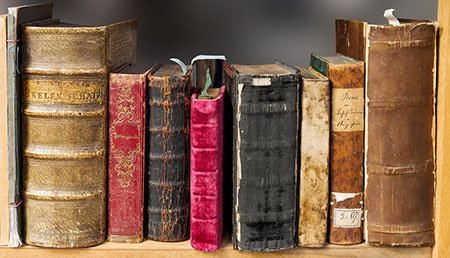Today is World Book Day. A day which celebrates our favourite classics that sit nestled on our shelves or waiting to be opened on our bedside tables. The vessels that provide us entertainment, an escape from the real world, education in many forms and a way to influence our thoughts – they deserve their own story; so let us a look back to how they came to be.
Heavy Reading
The history of books starts from the development of language and writing, which is a topic for another time perhaps, but the early conventions of ‘books’ began on tablets (no, not the iPad you have in front of you, we’re talking about the stone kind here).
Clay tablets were first used in what we know today as the Middle East (Mesopotamia), dating back to 3000 BC. Characters or glyphs were marked into the moist clay using an instrument before they were dried, stored and even categorised.
Not Quite a Paperback
Thanks to the Ancient Egyptians, who extracted marrow from the stems of the papyrus plant, the earliest form of paper was created – Papyrus- where the name ‘paper’ comes from. Dating back to around 2000BC the Egyptians would use a sharpened reed or a bird feather to scribe these parchments that would be bound or pasted together to form scrolls.
Some of the papyrus scrolls discovered contained the histories of Egyptian pharaohs – ancient biographies. These ‘books’ would contain political, religious and royal decrees written by scribes and titled accordingly, creating the earliest references to not only the material depiction of our modern-day books, but also the external format we know today.
On the other side of the world, in Mesoamerica (Central/South America), a different form of paper was being used. This was Amati paper, used to record astrological information, tribute collections, information about the gods, religious calendars and the genealogies of their rulers. Made from the bark from the Amate tree, these scripts were folded and protected by wooden covers- an early form of hard cover.
Made In China
Back in the 2nd century in China, the immediate forerunner to modern day paper was invented and this quickly took over from the use of silk. This new form of paper was aided by the technique of woodblock printing used to print text and patterns to produce books and was then the start of large scale production in China.
It was due to the early catholic missionaries that ventured into China and discovered that books were in circulation there that this was later adopted and spread into the western world, through the Middle East, helping spread religion, education and laws.
The Publishing Age
In 1440, Johannes Gutenburg, a German blacksmith, invented the printing press and allowed the publication of books to become an enterprise; lowering the cost of producing a book greatly.
Although they were printed in Latin, the spread of book printing quickly took off throughout Europe and created greater access to books – which would later be printed in other languages such as French and Old English.
World Book Day – A Concluding Chapter
The amazing journey of the development of books to what we now have today is a story worthy of its own autobiography. For centuries, we have been captivated and educated through words, patterns and images depicted on these pages and they remain in this very day a haven for us.
From telling a story, providing a history lesson or showing us how to cook the perfect lasagne; a book is the cradle of human achievement and will forever preserve the essence of the greatest human invention – words.
Choose Your Personal Alarm
To help you choose, start by selecting where you would use your personal alarm. In home only or at home and on the go.













Leave a Reply